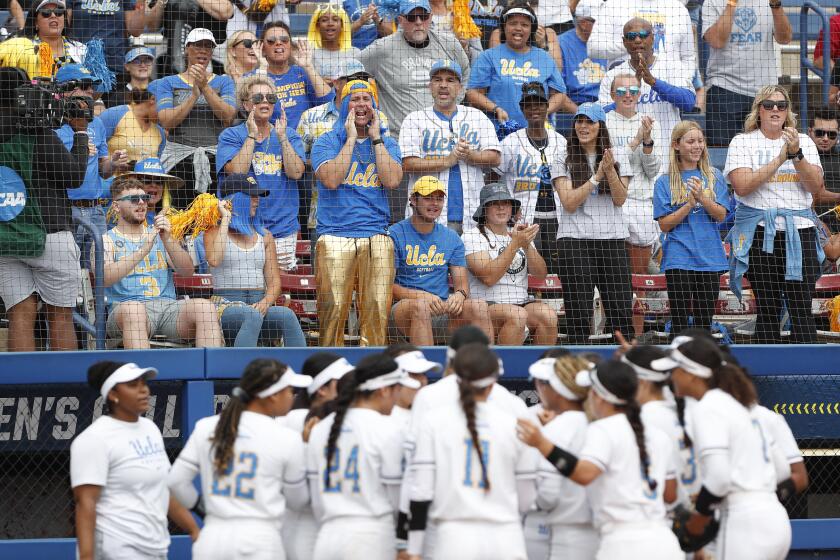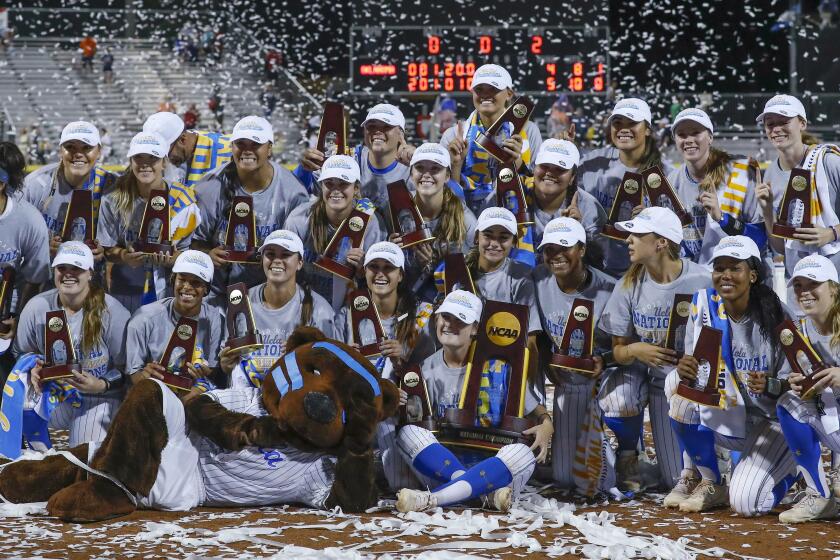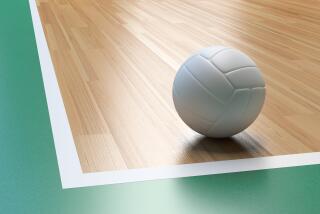Q&A: Everything you need to know for AVP Tour’s return to Hermosa Beach
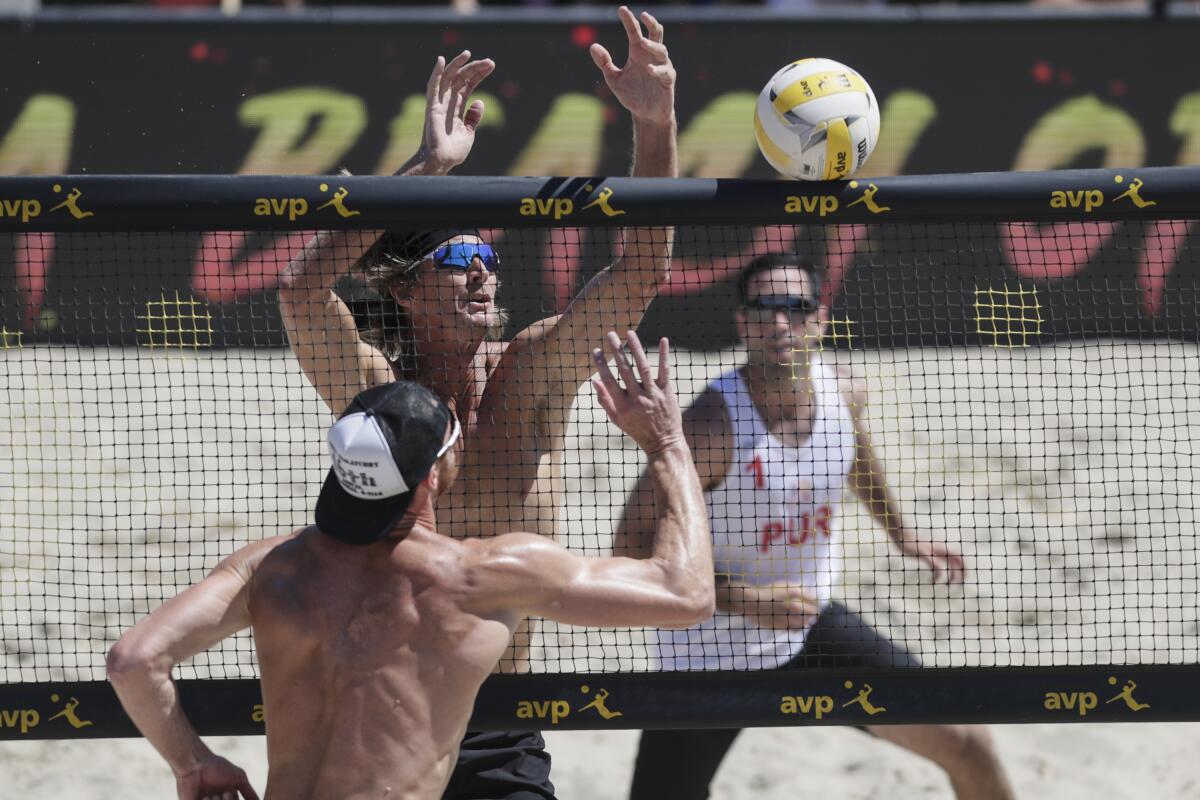
- Share via
High-flying, deep-diving and maybe a bit of sand-eating will be on display this weekend at Hermosa Beach.
For the first time since 2019, beach volleyball fans will flock to the South Bay to witness 16 men’s and women’s teams battle it out in the sand Friday through Sunday for the AVP Pro Series Hermosa Beach Open. Olympians and NCAA champions from the likes of USC and UCLA make up the teams headlining the free event.
As the pros compete for a $125,000 purse, youth volleyball players ages 12 to 18 will also take the sand as part of the AVP Junior Nationals that run through Sunday.
Here’s what to know about beach volleyball and the AVP Tour as it makes its first Southern California stop of the season at the Hermosa Beach Pier.
What is the AVP Tour?
The AVP Tour is the longest-running, premier beach volleyball tour in the United States. Since 1983, the AVP has organized events throughout the country for professionals and youth players.
This year’s 16-city tour began in Austin, Texas in May and will end in November with the Clearwater Open in Florida. Hermosa Beach will be the tour’s sixth stop of the year following competitions in Texas, New Orleans, Michigan, Denver and Wisconsin.
Once the tournament wraps this weekend, the tour will stop in Atlantic City, N.J., Fort Lauderdale, Fla., and Atlanta before returning to the South Bay for the AVP Gold Series Manhattan Beach Open Aug. 19 to Aug. 21.
UCLA, saddled with $102.8 million in athletic debt, wasn’t sure it could keep fielding all sports before the moving from the Pac-12 to the Big Ten.
How are tournaments set up?
Each tournament is a 16-team main draw for the men and women. The top-seeded teams play the lowest-seeded teams first, and the tournament is in a double elimination format.
The winner claims the cash prize which varies at each competition.
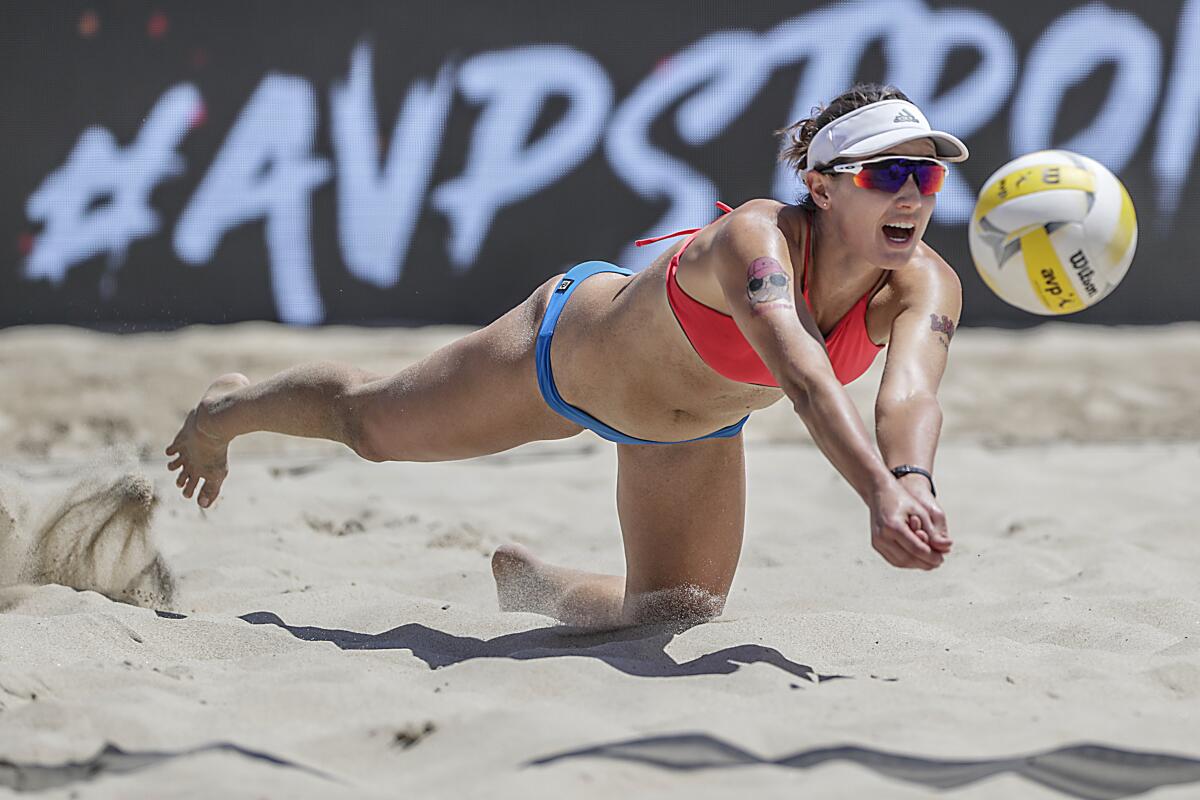
Who participates?
The 16 events of the season are divided into three series: the Gold Series, the Pro Series and the Tour Series. All host varying tiers of talent. The Gold Series that will occur in Manhattan Beach in August hosts mainly Tier 1 players, and the Pro Series at Hermosa Beach this weekend hosts mostly Tier 2 players. Tier 1 and Tier 2 players are the sport’s top athletes and compete for the most cash. Tier 3 and Tier 4 players have a chance to make a Pro Series or Gold Series if they play well enough.
Of the 16 men’s and women’s teams playing in the Hermosa Beach Open, 10 automatically entered based on their AVP ranking, which is determined by points. The remaining six teams are two wild cards and four duos who earned spots based on their performances in the AVP Tour Series Muskegon Open.
Teams with higher AVP rankings typically appear at several stops on the tour and make up the top seedings. Up-and-comers usually make up the bottom seeds and appear at specific tournaments only. Al Lau, chief executive officer of the AVP, said some of the AVP’s top players won’t appear this weekend because of international competition overseas, but will likely make an appearance at Manhattan Beach in August.
Most athletes who compete on the AVP tour are from the United States, though a handful of international athletes participate as well. Many of them are also Olympians or successful on the world stage.
Big names competing this weekend on the men’s side include: Phil Dalhausser, a four-time Olympian and 2008 gold medalist; Casey Patterson, a 2016 Olympian and Tri Bourne, a 2020 Olympian.
Big names competing this weekend on the women’s side include: Kelly Cheng, a 2020 Olympian and NCAA champion for USC; Sarah Sponcil, a 2020 Olympian and NCAA champion for UCLA; and Larissa Maestrini a three-time Olympian and 2012 bronze medalist.
Softball and gymnastics should thrive, but other USC and UCLA Olympic sports will face more formidable challenges after moving to the Big Ten.
What else is there to know about beach volleyball?
Beach volleyball is governed by a different set of rules and elements than its indoor counterpart.
The beach court is shorter than the indoor one, and beach volleyballs are bigger, softer and lighter for more air time. Air time is important in beach volleyball because two players comprise a team rather than six. Beach athletes must master all volleyball skills and have the stamina to play through a match.
“In indoor you might be the libero and you just pass or you just set or you are just a hitter,” Sponcil said. “But when you go to the beach you have to know how to do everything and your weaknesses are easily exposed.”
Scoring is different too. The first team to 25 points wins indoor sets, while the first team to 21 points wins beach sets. Indoor teams must win three sets, but beach teams just need two set wins.
Playing in sand versus on a wooden court is a major difference. Sponcil said the sand is easy on the joints, but not so much on the feet. Beach volleyball players remedy the burn with sand socks or by pouring water on the court. Some just power through.
“You can’t move well in them, so I really would rather burn my feet than wear these sand socks,” said Hailey Harward, a two-time national champion with USC and competitor this weekend. “If it’s really bad, I’ll wear the socks.”
The Phoenix native who also played indoors at Long Beach State has become well acquainted with sand.
“I am a big sand eater,” Harward said. “I love to just throw myself and dive for the ball, so a lot of times I get sand everywhere — in my ears, in my mouth, eating sand for a week.”
More to Read
Go beyond the scoreboard
Get the latest on L.A.'s teams in the daily Sports Report newsletter.
You may occasionally receive promotional content from the Los Angeles Times.
